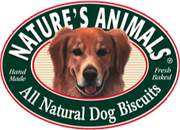Winter can be challenging for dogs. Protecting your pets from the snow and ice, as well as the freezing temperatures the winter brings, is important to keep your furry family member safe and healthy.
Limit your dog’s time outside
The delicate tail tips and earflaps are susceptible to frostbite. Keeping your dog inside in extreme cold, other than going outside to take care of business, is a good idea. The northern breeds that thrive in low temperatures are an exception. Even these dogs need time to acclimate to the freezing temperatures. In any case, be aware of the major signs of frostbite, which include skin that appears white or blue. Firm, waxy skin and blisters is also a sign of frostbite.
Don’t forget your dog’s jacket
Small, as well as large, short-haired dogs should have the appropriate winter wardrobe. Most dogs have their own coat but unless they are the northern breeds with the heavy coats, it’s best to put a jacket or sweater on your dog when going outside.
Protect Your Dog’s Paws
Winter conditions can damage your dog’s paws. Your dog’s paws need to be protected from the ice and the harsh chemicals in the ice-melt products. Dog boots are the best way to keep your furry friend’s feet safe if they can tolerate them. Your dog’s feet need to be cleaned if they don’t wear booties. You can keep a bucket of warm water near the door to dip those paws in as soon as they come back from their walk. Be sure to reach the spots between the toes and paws. You’ll want to trim the fur to prevent ice balls forming between the toes and pads. It is best to keep the fur even with the surface of the foot.
Applying a “paw balm” on your dog’s paws will keep the paws from further damage due to dryness.
Avoid the Ice
Slipping on the ice can lead to muscle strains and other injuries. Thin ice on ponds and lakes can easily crack and your dog can fall in.
Extreme Temperatures
Consider your dog’s age. Very old and very young dogs have a hard time regulating body temperature which may cause them to have more intense reactions to changes in weather. It’s best to keep puppies and senior dogs inside as much as possible.
Antifreeze
Dogs find antifreeze tasty. If you think your dog has ingested antifreeze, it is important to get to the vet as soon as possible. Just a small amount of antifreeze can cause kidney failure. Drooling, vomiting, excessive thirst, panting, lethargy, seizures, and a drunken appearance are signs that your dog has swallowed antifreeze. Most antifreeze is green but it comes in different colors. Be aware of where your dog is sniffing as there is still danger from residue on the streets.
STAY SAFE & WARM!

Leave a comment